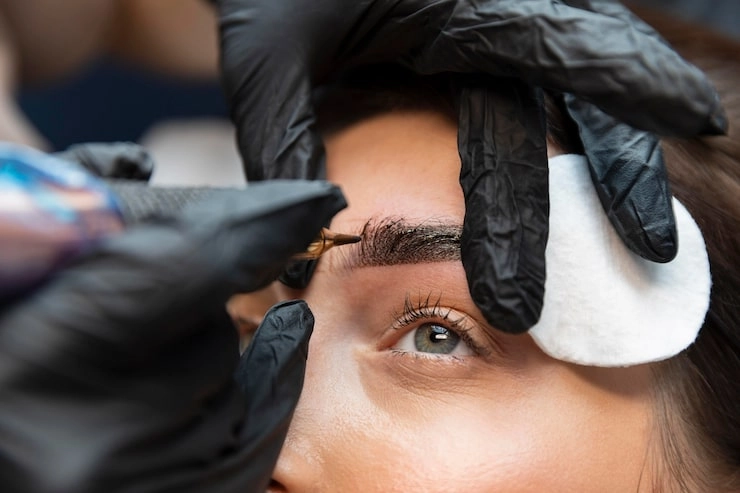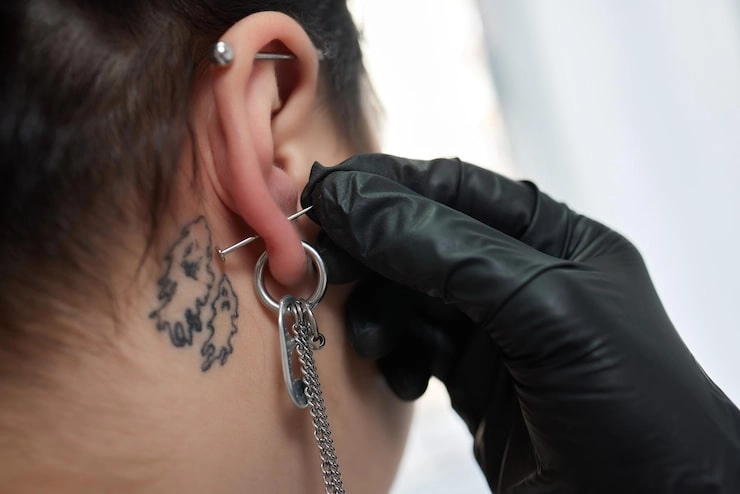The move from digital drawing to skin art is getting more and more common. It’s a big shift. As technology and design styles change, many digital artists are now looking into the world of tattooing, seeing it as more than a new job; it is a way to broaden their artistic reach.
Exploring the Shift from Digital Art to Tattooing
Moving from a screen to skin is a huge but fulfilling jump. It is very different. Digital artists already have a great grasp of composition, color theory, and visual storytelling. Tattooing gives a new dimension—literally making static drawings come alive on the human body.
First of all, a big reason digital artists are drawn to tattooing is the wish for lasting and personal art. Tattoos are forever. Unlike digital files, tattoos are lifelong statements that people wear with pride. What’s more, the need for custom tattoo work keeps growing, giving artists a special chance to run a business and be creative. Their skills in lines, shading, and style adapt nicely from digital tools to tattoo design.
Building a Professional Foundation in Tattooing
Artistic talent is important, but technical skill and following industry rules are even more so. This is crucial. Before you even touch a tattoo machine, it is not optional to understand the professional path, skin anatomy, and hygiene.
The Critical Role of a Tattoo Apprenticeship
The best way to become a pro tattoo artist is with an apprenticeship. It is the standard. This hands-on training with a skilled mentor is the industry norm for a very good reason. An apprenticeship teaches you more than just technique; it also covers talking to clients, running a studio, and the fine points of working on real skin. Practicing on fake materials is a great way to make a portfolio to get an apprenticeship, but it can’t ever take the place of one. Trying to tattoo people without this proper training is not professional. It is dangerous. It can also cause damage that cannot be fixed.
Learning the Basics of Skin Anatomy and Ink Application
Human skin is a living canvas, not a digital tablet. It’s alive. Tattooists need to know how to correctly put ink into the dermis layer and understand how things like skin tone, stretchiness, and body placement change the design. Thus, a mentor is vital for learning how to see different skin types and change your methods to match.
Hygiene, Safety, and Sterilization Protocols
Keeping a clean space is the top priority. It is everything. This includes the correct use of gloves, barrier films, autoclaves for cleaning tools, and strong disinfectants. Besides, safety rules also cover how to throw away needles and other biological waste safely. You learn and master these rules during an apprenticeship.
Licensing and Legal Requirements for Tattoo Artists
Every area has its own rules for licenses. They all differ. Future tattooists must look up the specific rules for their city, state, or country by calling their local public health department. Usually, this means you have to finish required training on bloodborne pathogens and get the right permits to work legally. Following the rules protects everyone.
Essential Tools for Tattoo Beginners
Picking the right gear helps new tattoo artists feel more sure of themselves and have better control when they practice.
Tattoo Machines: Coil vs. Rotary Options
Old-school coil machines use electromagnetic coils to move the needle. On the other hand, rotary machines use a little motor, so that they run more smoothly and quietly. Rotary machines are often suggested for new artists. They are lighter. They are also easier to take care of and give a steady needle motion, which helps a lot when you’re learning depth control.
Needle Types and Their Applications
Tattoo needles come in different groups, sizes, and setups. Know them well. Understanding them is really important for doing good work.
- Liners (RL – Round Liner): Needles are put in a tight circle. This makes sharp, clean lines.
- Shaders (RS – Round Shader): Here, needles are in a looser circle. They are used for shading small spots and some lines.
- Magnums (M1, M2, SEM): Needles are set in one or two flat rows. They work great for shading big areas, blending, and putting in color well.
Power Supplies, Cords, and Foot Pedals
A good power supply is very important for steady voltage. This stops needle drag or blowouts. What’s more, different voltage settings let artists adjust the machine’s speed for the technique and needle type they are using.
Developing Technique Through Practice
Before you look for an apprenticeship, you must practice a lot. This helps you build basic skills. It also builds a great portfolio.
Practice Materials for Aspiring Tattooists
Before you ever tattoo real skin, you must practice on fake surfaces first. It is required. High-quality silicone skins, like the A4 0.3mm sheets from brands such as Yaba, can feel like real skin, which allows for realistic practice of lines, shading, and color blending.
Stencil Creation and Transfer Methods
Drawing by hand is good for ideas, but learning to use stencils is key for getting it right. A stencil is a guide. It makes sure everything is even. It also ensures good proportion and accuracy when you tattoo. New tools, such as Yaba’s portable stencil printer, use wireless Bluetooth so that you can easily print stencils right from a tablet or phone.
Practicing Line Work, Shading, and Dotwork
You get good by practicing over and over. It takes time. Each style needs a different hand pressure, speed, and needle depth. Special practice tools can help. For example, ballpoint cartridges from suppliers like Yaba feel like a real machine but have no needle, which is great for building muscle memory.
For certain styles, dotwork tools from brands like Yaba can help new artists get good at the dotting methods used for mandalas or geometric art.
Seeking Constructive Criticism
Getting feedback from pros helps you grow faster. Ask for it. Joining online groups or going to tattoo shows can give you helpful tips on making your technique better and avoiding common errors before you go see a possible mentor.
Building a Portfolio to Secure an Apprenticeship
A good portfolio is like your resume for an apprenticeship. It has to show your art skills. It shows your promise. And it proves you are serious about the craft.
- Curate Your Best Work: Pick your best work. Show clean designs on fake skin and paper. These should display your control over line thickness, smooth shading, and a steady style.
- Show Progression and Versatility: Put your digital ideas next to your practice tattoos. This shows how you create. Make sure your portfolio shows a story of better lines, smoother shading, and clearer designs as you learn.
Final Thoughts on Your Journey
Tattooing needs more than just art talent. It also takes discipline, patience, technical skill, and the modesty to always be a student in a changing field. Every pro was once a rookie. Remember that. Think of mistakes as chances to learn while always keeping the highest standards for professional and safe work. Digital artists offer a new view on tattoo design, but being open to old ways and respecting the craft’s history will help you build a complete set of skills.
FAQs:
Q1: How long does it take for a digital artist to become proficient at tattooing?
A: It’s different for everyone based on their hard work and access to a mentor. However, most digital artists can learn the basic skills in 6–12 months. This happens with steady practice on fake skin and guidance from an apprenticeship.
Q2: Do I need expensive equipment to start learning how to tattoo?
A: No, you don’t. Many brands sell kits and practice stuff that are great for beginners. Cheaper choices like silicone skins, stencil printers, and practice tools—like those from suppliers such as Yaba—are great for starting without spending a lot of money.
Q3: What’s the best way to build my first tattoo portfolio?
A: You should focus on picking clean, well-done designs on fake skin. These show you can control line thickness, shading depth, and have a steady style. Also, put your original digital ideas next to the practice tattoos to show you can do different things and how you create as you move from digital drawing.







